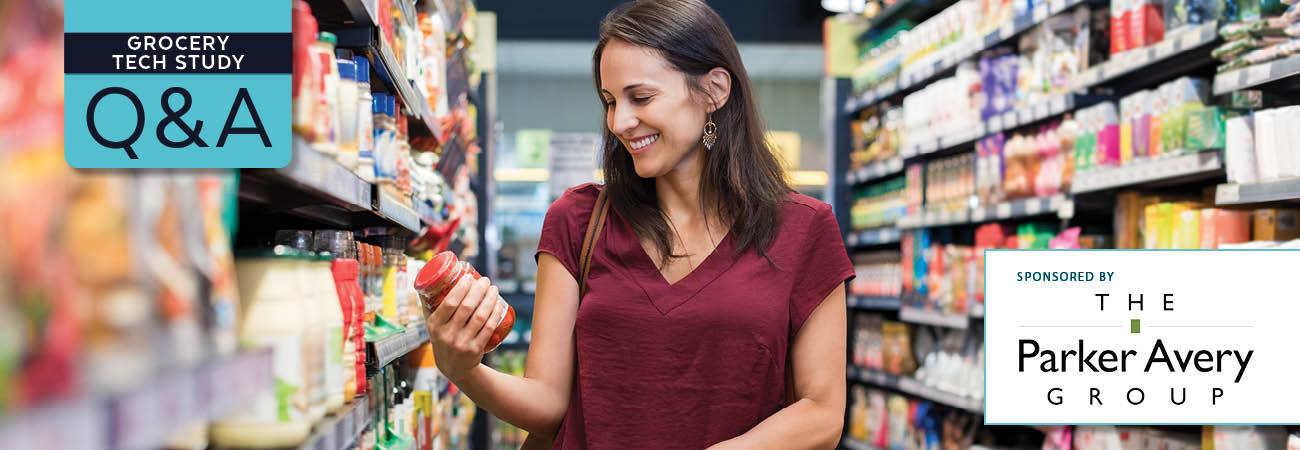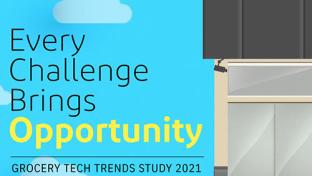How Grocers Can Right Their Inventory Woes
The grocery industry continues to deal with inventory woes brought on by unpredictable demand and an unstable supply chain.
In response, forward-thinking grocers are focusing technology investments on inventory and supply chain management solutions embedded with artificial intelligence and machine learning capabilities designed to predict demand rather than simply react to it.
RIS sat down with The Parker Avery Group’s chief analytics officer & managing partner Sam Iosevich to discuss the evolving grocery segment and how a commitment to continuous improvement supported by advanced technologies can help grocers stay ahead of the pack.
RIS: Which emerging technologies are must-haves for forward-thinking grocers?
Iosevich: Historically grocers have lagged other retail segments in advanced technology, likely driven by significantly lower margins. The combination of pandemic requirements along with a focus on enhancing inventory management with technology and advanced analytics is pushing grocers to play catch up quickly.
Forward-thinking grocers are focusing technology investments on inventory management driven by artificial intelligence and machine learning (AI/ML) to inform demand management decisions. This means using new data sources to provide an improved demand signal throughout the retailer/supplier supply chain. In addition to transactional data, sources include a combination of shelf cameras and robotics to scan aisles, allowing better control of shelf inventory levels and re-stocking, as well as external macroeconomic data to more accurately predict demand.
Automated shelf pricing labels, powered by pricing optimization engines, is another key area of investment, allowing grocers to monitor and adjust pricing based on the most recent cost, supply, and competitive data.
RIS: How can leading grocers reimagine their businesses to become more customer-centric?
Iosevich: Omnichannel related services are pushing grocers to introduce new ways to serve customers beyond the deli, butcher, and checkout lane. Combining in-store shopping with fulfillment options like delivery and curbside pickup allows customers to shop how and when they want. However, the in-store experience should continue to be a focus area to enhance engagement and strengthen customer loyalty. The focus must be on reimagining the grocery shopping experience away from a mundane chore and towards an enjoyable event. Further, leading grocers must capture all shopping behavior data — beyond transactions and by customer to improve future interactions.
RIS: What is the single biggest change you have seen in grocery operations over the past two years?
Iosevich: Most notable is increased focus on omnichannel and enhancing customer experience. Today's operational focus expands beyond stocking shelves to engaging customers, enhancing loyalty, fulfilling online/curbside, and providing a seamless experience regardless of shopping channel.
We have all watched the Amazon/Whole Foods and Walmart/Jet dynamics with interest — this blended grocery model continues to evolve. Certainly, the pandemic hastened many traditional grocers’ omnichannel capabilities. However, as the dust settles, the industry is placing high priority on strategically fusing digital and physical grocery shopping to meet customer needs.
RIS: How can advanced AI/ML solutions help ensure grocers have on-trend products in stock?
Iosevich: Grocery is about availability and freshness, so the ability to quickly adjust to demand is key. AI/ML solutions can enhance and strengthen manual category management and fulfillment forecasting, creating more accurate and timely information for supply and delivery planning. Also, using AI/ML to analyze customer data and provide visibility into marketing, promotions, assortment choices, and store experience allows grocers to understand macro trends and adapt accordingly. Advanced tools enable grocers to better refine their categories and assortment attributes/clusters based on store-level shopping trends, improving their inventory placement, while maximizing sales and margin. AI/ML also dramatically reduces response times to current trends and customer needs by unifying the organization around one demand signal.
The Parker Avery Group is a leading retail and consumer goods consulting firm. Along with Demand Intelligence, our AI-driven planning solution, we help global brands integrate advanced analytics and technologies into business operations, deploy new capabilities, and implement sustainable change. Leveraging deep industry expertise and experience, Parker Avery’s consulting team delivers leading practice transformation and sustained business value.






